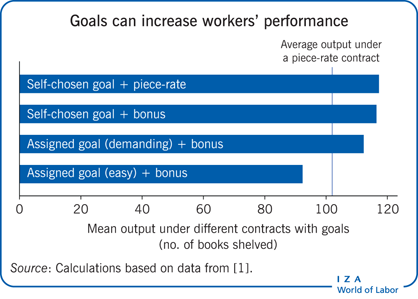Elevator pitch
Employers want motivated and productive employees. Are there ways to increase employee motivation without relying solely on monetary incentives, such as pay-for-performance schemes? One tool that has shown promise in recent decades for improving worker performance is setting goals, whether they are assigned by management or self-chosen. Goals are powerful motivators for workers, with the potential for boosting productivity in an organization. However, if not chosen carefully or if used in unsuitable situations, goals can have undesired and harmful consequences. Goals are a powerful tool that needs to be applied with caution.
Key findings
Pros
Using goal-setting techniques can increase workers’ motivation and performance.
Goals are especially effective if the work task has a simple structure.
Individual work goals can increase performance, whether assigned by management or chosen by the worker.
Even when monetary incentives are already high, complementing those incentives with goal setting can improve performance.
Similar to the effect of monetary incentives, goals help to focus attention on the most important parts of the work task.
Cons
Goals that focus solely on output quantity can lead to lower quality outputs.
If assigned goals are too ambitious, excessive risk taking may result.
Work goals that are based on the output of individual workers can reduce cooperation among workers.
Goals can encourage unethical behavior and lead to overcharging and misreporting of performance measures.
Many of the caveats that apply to monetary incentives also apply to goal setting.
